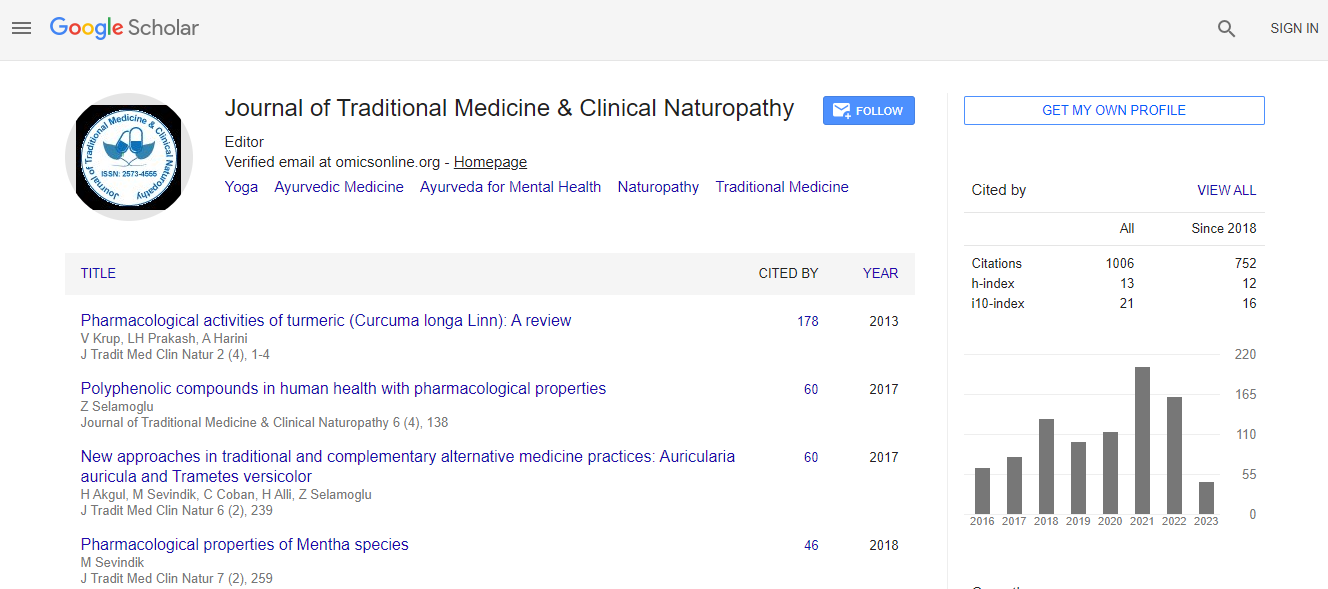Review Article
Role of Gymnema sylvestre as Alternative Medicine
| Lalit Kishore, Navpreet Kaur and Randhir Singh* | |
| M.M. College of Pharmacy, Maharishi Markandeshwar University, Mullana, Ambala, Haryana, 133207-India | |
| Corresponding Author : | Randhir Singh M.M. College of Pharmacy Maharishi Markandeshwar University Mullana, Ambala, Haryana, India Tel: +91- 80509930172 E-mail: randhirsingh.dahiya@gmail.com |
| Received October 14, 2014; Accepted December 08, 2014; Published December 29, 2014 | |
| Citation: Kishore L, Kaur N, Singh R (2015) Role of Gymnema sylvestre as Alternative Medicine. J Homeop Ayurv Med 3:172. doi: 10.4172/2167-1206.1000172 | |
| Copyright: ©2015 Kishore L, et al. This is an open-access article distributed under the terms of the Creative Commons Attribution License, which permits unrestricted use, distribution, and reproduction in any medium, provided the original author and source are credited. | |
Abstract
Context: Gymnema sylvestre R.Br, belonging to the family Asclepiadaceae, has been employed to control diabetes, obesity, atherosclerosis etc., by traditional medicinal practitioners of India for nearly two millennia. The active principals from the leaf extracts is assumed to be gymnemic acid and its derivatives which are of triterpenoids in chemical nature have the ability to renew the islet cell mass for the possible cure of diabetes. Objective: The present review deals with botanical description, chemical constituents, and pharmacological effect of the plant using herbal and homeopathic medicine from the past to recent developments. Methods: Scientific databases including SCOPUS, PUBMED, SCIELO, NISCAIR, and Google Scholar were used to retrieve articles and only relevant studies published in English were considered. Results: This paper gives an overview of G. sylvestre from antiquity to till date. There is sufficient evidence of pharmacological and phytochemical studies to draw a definite conclusion about the efficacy of the gymnemic acid for the treatment of diabetes and obesity but, there is still inadequate literature related to other activities. The reported studies on the effect of G. sylvestre as homeopathic medicine are not sufficient. Therefore further studies are needed to explore the role of G. sylvestre in homeopathy. Conclusion: There is still a dire need to explore the mechanism of action of G. sylvestre, toxicity profile and to determine its role as alternative medicine.

 Spanish
Spanish  Chinese
Chinese  Russian
Russian  German
German  French
French  Japanese
Japanese  Portuguese
Portuguese  Hindi
Hindi 
